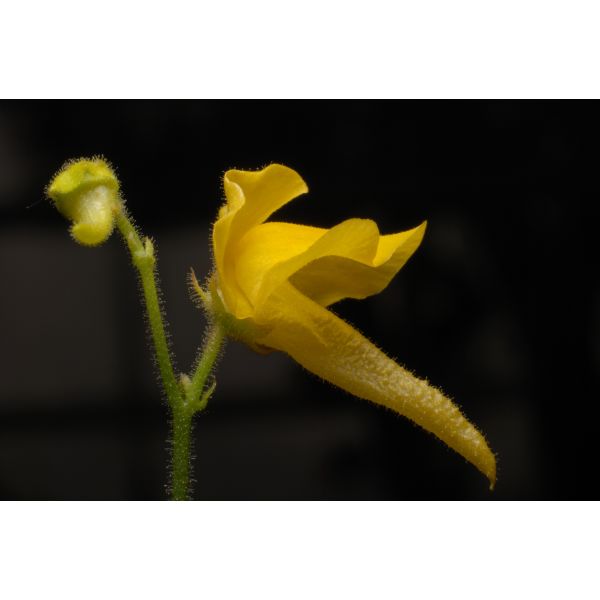Genlisea Aurea Seeds (Corkscrew Plant Seeds)
Genlisea Aurea Seeds (Corkscrew Plant Seeds)
These plants are terrestrials or semi-aquatics.

Delivery
All orders shipped with UPS Express.
Always free shipping for orders over US $250.
All orders are shipped with a UPS tracking number.
Returns
Items returned within 14 days of their original shipment date in same as new condition will be eligible for a full refund or store credit.
Refunds will be charged back to the original form of payment used for purchase.
Customer is responsible for shipping charges when making returns and shipping/handling fees of original purchase is non-refundable.
All sale items are final purchases.
Help
Give us a shout if you have any other questions and/or concerns.
Email: contact@domain.com
Phone: +1 (23) 456 789
Availability: Out of stock
SKU
Genlisea Aurea
Genlisea aurea, also called the Corkscrew Plant, is endemic to Brazil, where it is widespread on sandstone highlands. It is a perennial plant, typically found at altitudes varying from 550 m to 2550 meters. The plant size is around 3-5 cm in diameter. These plants are terrestrials or semi-aquatics. They are a very recent discover, only entering cultivation in the mid 1980's.
Genlisea aurea is one of the largest species in the genus Genlisea. It has unique rosettes made up of dozens of almost linear leaves. Although the leaves are usually 5 to 50 mm long, the rosettes are at maximum around 5 cm in diameter because only the leaf tips are visible at soil level. When not in flower, Genlisea aurea is the easiest Genlisea species to recognize in Brazil, because of its rosettes composed by dozens of narrow leaves covered by a thick layer of gelatinous transparent mucilage, especially in shady habitats.
The flowers are a bright-yellow to golden-yellow. Genlisea aurea can be found in flowers year round. The flower scapes of Genlisea aurea are very robust, usually 10-30 cm in height, but sometimes surpassing 40 cm, and densely covered in both simple and glandular hairs. Each inflorescence commonly bears one to three open flowers at its apex, but may produce a total of eleven flowers.
Most of the Genlisea are generous flowerers from Spring until Fall, and if pollination occurs, abundant seed is produced. Growth is relatively quick, and flowering plants can be grown within a few months. They have lovely flowers and once they start to bloom, will bloom basically continuously. Dead growth and expired flowers should be removed to prevent fungus.
Genlisea is a genus related to both Utricularia and Pinguicula with perhaps the strangest trapping method of all the carnivorous plants. They have very unusual traps, which are essentially undergroud. It specializes in protozoa and attracts its prey chemically. The trap extends downward from the plant in a cylindrical stalk. Between 1 to 3 inches, down from the plants this stalk opens to a bulb-like digestion chamber. The trap continues down from here in a hollow, tube-like structure, until it branches in to two corkscrew-like extensions. There is a slit in the corkscrews that begins at the branching. Any creature small enough to enter this slice opening finds itself in a tubular tunnel. Once in the trap, the prey is forced forward, for hairs prevent it from moving back out. It eventually winds its way up to the digestive gland where it is digested, furnishing the plant with nutrients lacking from the impoverished soils in which they grow.
Hardiness zone 11, (4øC/40øF) in Winter. The compact rosettes are usually covered by a film of cold flowing water. Genlisea Aurea habitats are usually wet year round. Keep the plant wet and warm for the whole year. Containers should be water tight, keeping the water level up to the surface at all times. Genlisea are tropical in nature and prefer temperatures above 20øC at all times and they prefer high humidity. You can keep them on a sunny windowsill, but beware of the cold. You can grow your Genlisea in pure peat moss, or a mix of 3 parts of peat moss for 1 part sand.
| Common name | Corkscrew Plant |
|---|---|
| Species | Genlisea aurea |
| Germination | The seeds are tiny. Seeds of species from the genus Genlisea are sown on the surface of the common planting medium, 3 parts of peat moss for 1 part sand. At a temperatures of 25-35øC, they will usually germinate within several weeks or months. These seeds also require a lot of light, at least artificial light, and a photoperiod of 10-12 hours. The seeds can also benefit from fluctuating temperatures, with day temperatures above 30øC and below 18øC at night. Good ventilation is also necessary from the start of sowing, but excessive drying must be avoided. |
| Price View | Price Range |

